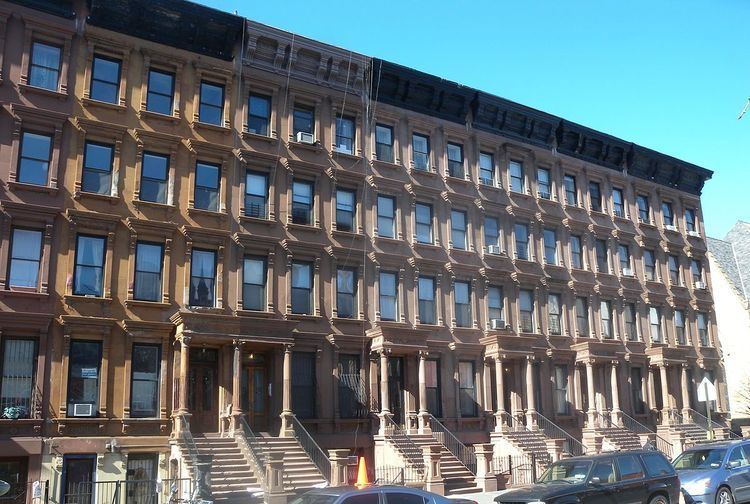Maintained by NYCDOT | Former name(s) Sixth Avenue Length 1.9 mi (3.1 km) Part of Sixth Avenue Commissioned March 1811 | |
 | ||
South end Central Park North / East Drive in Harlem | ||
muninyc 116th street lenox avenue harlem manhattan 10026
Lenox Avenue – also named Malcolm X Boulevard; both names are officially recognized – is the primary north–south route through Harlem in the upper portion of the New York City borough of Manhattan. This two-way street runs from Farmers' Gate at Central Park North (110th Street) to 147th Street. Its traffic is figuratively described as "Harlem's heartbeat" by Langston Hughes in his poem Juke Box Love Song. The IRT Lenox Avenue Line runs under the entire length of the street, serving the New York City Subway's 2 3 trains.
Contents
- muninyc 116th street lenox avenue harlem manhattan 10026
- Map of Malcolm X Blvd New York NY USA
- muninyc west 145th street lenox avenue harlem manhattan 10030
- History
- In popular culture
- References
Map of Malcolm X Blvd, New York, NY, USA
From 119th Street to 123rd Street, Lenox Avenue is part of the Mount Morris Park Historic District, designated by the New York City Landmarks Preservation Commission in 1971.
muninyc west 145th street lenox avenue harlem manhattan 10030
History
Originally a part of Sixth Avenue, it was renamed in late 1887 for philanthropist James Lenox. In 1987, it was co-named Malcolm X Boulevard, in honor of the slain civil rights leader.
The avenue was the heart of Harlem during the Harlem Renaissance in the 1930s. The street brought together African Americans, Latinos, British West Indians, and Spaniards who developed relationships over common interests such as jazz and food. In 1932, Harlem was so firmly established as the world capital of jazz and African-American culture in general that "black cinema" films like Harlem Is Heaven were playing on the nation's big screens. Jazz flourished and grew like it could have in no other time and place. "You might have had 15 great clubs on one block, all going at once," said the trombonist and bandleader Wycliffe Gordon. "Imagine going into a joint to check out Willie 'The Lion' Smith, and sitting next to you are Duke Ellington and James P. Johnson." Lenox Avenue is thought by some to be one of the most important streets in the world for African American culture.
The Savoy Ballroom was located between 140th and 141st Streets on Lenox Avenue. Other historical venues of Lenox Avenue are Sylvia's Restaurant, located between 126th and 127th; and the Lenox Lounge, located between 124th and 125th.
